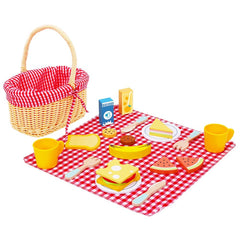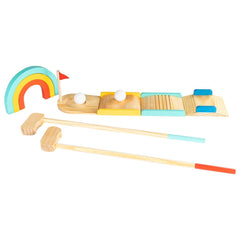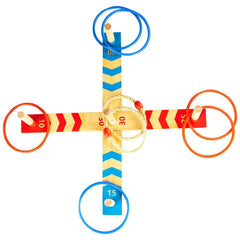It's the baby walker that can be conveniently instrumental in helping your baby reach milestones like those early steps. There are so many choices that you can overlook the best ones, and this could be a hypnotising experience. There could be a case where you say, I will be buying a small rollator for a beloved baby girl or a strong wooden walker that lasts longer. Discovering the proper age for your child to be a walker is essential.
Baby walkers in the UK are a popular way of going, maybe for those who need one that can be used inside or the one with wheels to provide overall flexibility. Prioritising safety is crucial, and many new mothers enquire, "Are baby walkers safe for babies at all?" Therefore, we must implement safety measures to ensure these gadgets are not only fun but also safe.
Baby Walker Age
At what age should a baby get a walker? Is a question more parents are asking as their little ones pass through this stage of the curiosity boom and start to explore the surrounding area? This kind of toy usually becomes useful after six months or as early as twelve months.
Before putting him/her on the walker, there is a need to look for the signs of readiness. The signs might appear to be keeping their head straight while holding, pulling themselves to stand, having the ability to bear on the legs and finally demonstrating curiosity about moving around.
We comprehend the value of finding the right toddler walkers for your child to support their cognitive and motor development. We have various walkers that are suitable for newborns, such as the wooden walkers and sit-in walkers, as well as those that have been made by considering your child's safety and comfort.
Types of Baby Walkers
It is the key not only for your baby’s safety and development but also for his excellent cognitive and physical performance. This concept embodies the fact that selecting the best walker is essential. In this case, we will provide many options based on what you want for your baby. Different walking toys can serve various purposes.
-
Sit-In Baby Walker
Our walker has a rectangular seat designed for your sitting baby to rest while playing with toys that are hung at the bottom of the walker. Additionally, it aids in the development of children's focus, hand-eye coordination, and dexterity, all of which are crucial for their growth and development. -
Wooden Baby Walker
Not all parents go for the trendy and special ‘option. For parents who prioritise sustainability and durability, Barnshenn's wooden baby walkers are excellent choices. Furthermore, constructed with top-notch materials, these walkers are stable, safe, and encourage movement. -
Activity Baby Walker
We designed our walker with fun educational games and toys to keep the baby's brain active and entertained. It's a wonderful way to have your small toddler delight in it and still get new tricks to balance.
Baby Walker with Wheels
A baby walker with a caster is an excellent plaything for kids who are mobile and love to roam the room. Lessening this, walkers give a child a full range of motion, a situation that is stimulating to babies and a means for them to be fully entertained. The type of baby walker that you are looking for—whether it is a baby walker for girls or a baby walker for boys—or colours and models to suit your child’s needs.
At Barnshenn, we provide the most varied selection of walkers with wheels that are not only fun for your toddler but also safe for their usage. When it refers to the time in their lives when babies first demonstrate interest in walkers, the babies normally engage in walkers after 6 months and up until 12 months.
Choosing the right facilitator is one of the most crucial aspects. He/she should support the learner’s natural movement and improve their posture. Whether it is the maintenance of equipment or the health of employees, safety is our priority at our barn organisation, Barnshenn. All model toddler walkers with wheels go through strenuous tests to reach the mandatory safety standards.
Benefits of using a baby walker
Benefits of baby walker rental from Barnshenn cannot be underestimated since they will positively impact your child's development. Either a baby walker for girls or a baby walker for boys, the overall style is determined by the aim of giving children with toys and games fun. A baby walker is not only eco-friendly but also durable and strong, thus providing a long-term supply for future generations to play with.
Baby walkers with wheels encourage your kids to explore independently, which fosters a sense of freedom and independence in them. In addition to improving your child’s walk, stability walker seats also stimulate hand-eye coordination. People in the UK prefer Barnshenn baby walkers due to their quality and safety features.
However, it is necessary to take into account the kind of walker that is best for a baby at his or her age before thinking of providing one. Used appropriately and under supervision, the baby walkers can be very functional, friendly devices, as they can contribute to your baby's development.
Are baby strollers OK for babies?
Walkers or moving baby seats can be a great and fascinating tool for a baby to discover the world around him and master motor skills. They are designed in different types: soft baby walkers for girls and cotton baby walkers for boys, and they can be produced from natural materials such as wooden walkers. Conversely, you should prioritise safety when introducing your little one to a walker.
Generally, they start steering forwards at about 6 to 12 months, but individual cases are different. Parents in the UK should make a study about all the risks that a baby walker can pose before using such an appliance. Sitting in a baby walker with wheels, while popular among parents, could be a challenge, as they may roll over and inflict an injury or worse. The wood material of the baby walker from Barnshänn is durable, but you still need to supervise your child.
Safety Guidelines for Using Baby Walkers
Safety should always be a top priority when it comes to using baby walkers, whether it's a baby walker for girls or boys. Choosing a sturdy and stable walker is crucial to ensuring your child's safety. A wide base can help prevent the walker from tipping over, giving you peace of mind while your baby explores.
Avoiding stairs and uneven surfaces is essential when using a baby walker with wheels. These surfaces can be hazardous and increase the risk of accidents. Always ensure your child's safety and never leave them unsupervised when using the walker.
At Barnshenn, we understand the concerns parents may have about the safety of baby walkers. We design our range of baby walkers, including our popular wooden baby walker and sit-in baby walker, with safety in mind. We believe in providing parents with quality products that meet their child's developmental needs without compromising on safety.
When should the baby start walking with a walker?
Encountering the walker with your celebrating child is a great opportunity. So, many questions arise, like at what age should a baby get a walker? When should the baby start walking with the walker? Around 90% of babies seem to become attached to walkers between the ages of 6 and 12 months. During this period, the majority of young individuals can sit independently and start to become more active. They begin investigating their surroundings.
At Barnsenn, we suggest the baby's Reggio materials, which include age-appropriate active toys with the first stages of mobility for the senior babies. After your child is able to hold his or her head straight in the sitting position and can sit up with no support from any side, you may consider adopting a baby walker. The key point to make is that you should always review it with your paediatrician in case your baby can or cannot handle a walker.
Conclusion
The right baby walker is a choice that you will make, which is the stepping stone for your baby's journey towards independence. Barnshenn offers a diverse selection of options, including baby wheel walkers, sit-in walkers, and the premium wooden baby walker composite. Each machine is unique in terms of both pros and cons, such as that they promote movement and help improve cognitive skills.
Safety should always be considered before selecting a baby walker. Provide stability by creating the walker base and preventing poisoning by selecting non-toxic materials. Our Barnshenn wooden baby walkers are tailor-made to provide safety and durability to the extent that your baby can explore with you, leaving you no worries.
Beyond meeting basic necessities, it's crucial to address developmental needs. While you might prefer walking with your baby as soon as possible, it is important to consult a paediatrician before considering a walk. They provide essential guidance for your infant's growth and development.
FAQs
1. What is the recommended baby walker age?
Most babies start showing interest in using a baby walker between 6 and 12 months. However, it's essential to observe your baby's developmental milestones and readiness cues before introducing a walker. Always consult your paediatrician to ensure your baby is developmentally ready for a walker.
2. Are baby walkers okay for babies?
Baby walkers can be beneficial for babies' development when used correctly and under supervision. They offer opportunities for exploration and can help develop motor skills. However, it's crucial to consider safety aspects and always supervise your baby while using a walker to prevent accidents.
3. What types of baby walkers does Barnshenn offer?
Barnshenn offers various baby walkers tailored to meet different needs:
Sit-In Baby Walker: Provides a comfortable seat for babies to play and develop hand-eye coordination.
Wooden Baby Walker: Eco-friendly and durable walkers made from high-quality wood.
Baby Walker with Wheels: Allows babies to move around independently, promoting freedom and independence.
4. How do I ensure the safety of my baby while using a walker?
Safety should always be a top priority when using baby walkers. Here are some tips to ensure your baby's safety:
- Choose a sturdy and stable baby walker with a wide base to prevent tipping over.
-
Avoid using the walker near stairs or uneven surfaces.
-
While using the walker, always monitor your baby and never leave them unattended.
- Regularly check for wear and tear and ensure the walker is on a flat surface.
5. Can I use a baby walker as soon as my baby starts crawling?
Wait until your baby shows signs of readiness, typically between 6 and 12 months, before introducing a baby walker. Consult your paediatrician to determine if your baby is developmentally ready for a walker.
6. Are Barnshenn baby walkers made from safe materials?
Yes; at Barnshenn, we prioritise safety and quality. We make our baby walkers, including the wooden ones, from non-toxic and eco-friendly materials to ensure your little one's safety.
7. Does the usage of baby walkers to support babies to walk help or hinder their natural development of walking?
However, it's crucial to remember that improper operation and supervision can lead to some issues with baby walkers. Parents can then make use of baby walkers as helpful baby development tools. They are able to do strengthening exercises with the babies as they build their muscles and gain balance. On the other hand, there is a need to make them an adjunct and not a main component in your baby’s growth.





